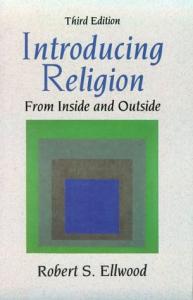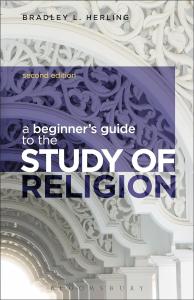The Academic Study of Religion Versus Sectarian Teaching
Understanding the Distinctions and Purposes in Modern Scholarship
Religion, in its myriad forms and expressions, has shaped human civilization for millennia. Its stories, rituals, and beliefs continue to influence societies and individuals worldwide. Yet, how religion is studied or taught is not a monolithic process. Two major approaches arise in contemporary discourse: the academic study of religion and the sectarian teaching of religion. While both concern themselves with religious ideas and practices, their aims, methods, and philosophies are profoundly different. This article examines the academic study of religion, contrasting it with sectarian instruction, and considers why understanding these differences is crucial for education, scholarship, and pluralistic societies.
Defining Key Terms
The Academic Study of Religion
Often situated within universities or research institutions, the academic study of religion—sometimes referred to as religious studies, comparative religion, or the science of religion—is an interdisciplinary field dedicated to examining religious phenomena in a critical, analytical, and non-sectarian manner. Scholars approach religion as a complex human and social phenomenon, employing tools and theories from diverse disciplines, including history, sociology, anthropology, psychology, philosophy, literary studies, and even the natural sciences. The academic study of religion treats religious traditions as subjects for understanding, rather than as systems to be believed in or practiced.
Sectarian Teaching of Religion
Sectarian teaching, by contrast, is rooted in a particular religious tradition or denomination. It seeks to impart specific doctrines, encourage faith or spiritual practice, and often aims to foster a distinct religious identity. This form of instruction is common in places of worship, religious schools and seminaries, or faith-based communities, where the ultimate goal is not disinterested analysis, but personal conviction or spiritual formation.
Goals and Objectives
Objectives of the Academic Study of Religion
The fundamental aim of academic religious studies is understanding. Scholars seek to comprehend the origins, development, texts, rituals, institutions, and impacts of religions throughout history and across cultures. Their objectives include:
- · Providing students with knowledge about diverse religious traditions without promoting adherence to any of them.
- Fostering critical thinking and analytical skills allows students to interpret religious phenomena contextually and historically.
- Developing cross-cultural literacy and empathy by exposing students to beliefs and practices different from their own.
- Investigating the role of religion in society, politics, ethics, literature, and the arts.
- Contributing to scholarly debates about the nature, function, and future of religion.
Objectives of Sectarian Teaching of Religion
Sectarian instruction aims to nurture faith, deepen religious commitment, or convey specific doctrines. Its objectives often include:
- · Instilling belief in specific religious teachings and sacred texts.
- Encouraging moral conduct or spiritual practices as defined by the tradition.
- Preparing individuals for rites of passage, leadership roles in religion, or community engagement.
- Strengthening communal bonds and religious identity.
- Transmitting values and worldview associated with the tradition.
Methods and Approaches
Methods in the Academic Study of Religion
The academic study of religion employs a variety of scholarly tools and methodologies:Historical Analysis:
- Examining the emergence and transformation of religions over time using documentary, archaeological, or textual evidence.
- Comparative Approach: Identifying similarities and differences among religious traditions to understand universal patterns and unique features.
- Sociological and Anthropological Methods: Investigating how religions function within societies, including their roles in shaping identity, power, and culture.
- Psychological Inquiry: Exploring the cognitive, emotional, and behavioral dimensions of religious belief and experience.
- Philosophical and Theological Critique: Analyzing the logical coherence, ethical implications, and existential significance of religious claims (often distinguished by maintaining neutrality regarding truth claims).
- Literary and Textual Criticism: Interpreting sacred texts as literature, considering their structure, symbolism, and context.
A key hallmark of academic study is methodological agnosticism: the refusal to privilege or assume the truth of any single religious tradition when conducting analysis.
Methods in Sectarian Teaching of Religion
The tenets of the specific tradition usually shape methods in sectarian teaching:
- · Doctrinal Instruction: Teaching the central beliefs, creeds, and dogmas of the faith.
- Scriptural Study: Reading and interpreting sacred texts as divinely inspired or authoritative.
- Ritual Practice: Engaging in worship, prayer, or other religious rites as part of the learning process.
- Moral and Spiritual Formation: Encouraging personal growth according to the values and virtues prized by the tradition.
- Faith-Based Community Life: Integrating students into the religious community, often through shared practices and celebrations.
The method is confessional, meaning it assumes or encourages personal faith in the religious worldview.
Contexts and Settings
Where Academic Study Occurs
Academic religious studies are typically found in secular universities, colleges, or research institutes. Courses in religious studies can be part of the humanities, social sciences, or interdisciplinary programs. The classroom is a space for critical engagement, open dialogue, and intellectual exploration.
Where Sectarian Teaching Occurs
Sectarian teachings are the domain of religious institutions, including churches, mosques, temples, synagogues, and faith-based schools. These settings are shaped by the shared beliefs and practices of a particular community, and the authority of tradition is often emphasized.
Attitudes Toward Truth and Pluralism
The Academic Perspective
Academic religious studies do not aim to resolve religious truth claims or convert students to a particular set of beliefs. Instead, they aim to foster understanding, tolerance, and critical inquiry. The field acknowledges the extraordinary diversity of religious thought and experience, and values the examination of all perspectives, including skeptical or atheistic ones.
The Sectarian Perspective
Sectarian teaching, by contrast, is often concerned with the affirmation of a particular truth. Instruction may include apologetics—arguments for the truth or superiority of the tradition’s claims—and may discourage or limit the exploration of alternative worldviews, especially if those are seen as heretical or contrary.
Challenges and Critiques
Challenges Facing the Academic Study of Religion
· Maintaining neutrality and avoiding the imposition of personal beliefs on students.
· Overcoming misconceptions that academic study is anti-religious or relativistic.
· Addressing the vast diversity of religions without superficiality or bias.
· Navigating sensitivities when subjects touch on deeply held beliefs.
Challenges Facing Sectarian Teaching
· Balancing faith formation with openness to critical questions.
· Responding to the realities of religious pluralism and interfaith dialogue.
· Ensuring that confessional instruction does not marginalize those with differing beliefs.
· Adapting traditional teachings in the face of changing cultural and ethical norms.
The Value of Distinction
Recognizing the difference between academic study and sectarian teaching is not a matter of privilege or hierarchy, but of clarity of purpose. Each approach serves important, though distinct, functions. Academic scholarship advances knowledge, fosters pluralism, and nurtures the skills of critical thinking indispensable in a globalized world. Sectarian instruction fosters faith communities, preserves tradition, and offers spiritual guidance to adherents.
Confusion between the two can lead to controversy: introducing sectarian perspectives in secular classrooms raises questions about church-state separation. At the same time, academic approaches in faith-based settings may be perceived as threatening or undermining belief.
Conclusion
The study of religion, whether academic or sectarian, is central to understanding the human quest for meaning. The academic study of religion equips us with the tools to appreciate the vast tapestry of beliefs and practices that comprise the world’s religions. At the same time, sectarian teaching enlivens the traditions that have shaped individuals and communities throughout the centuries. Both have their place—when each is pursued with integrity, respect, and an awareness of its goals, the result is a richer, more nuanced engagement with one of humanity’s most profound dimensions.







